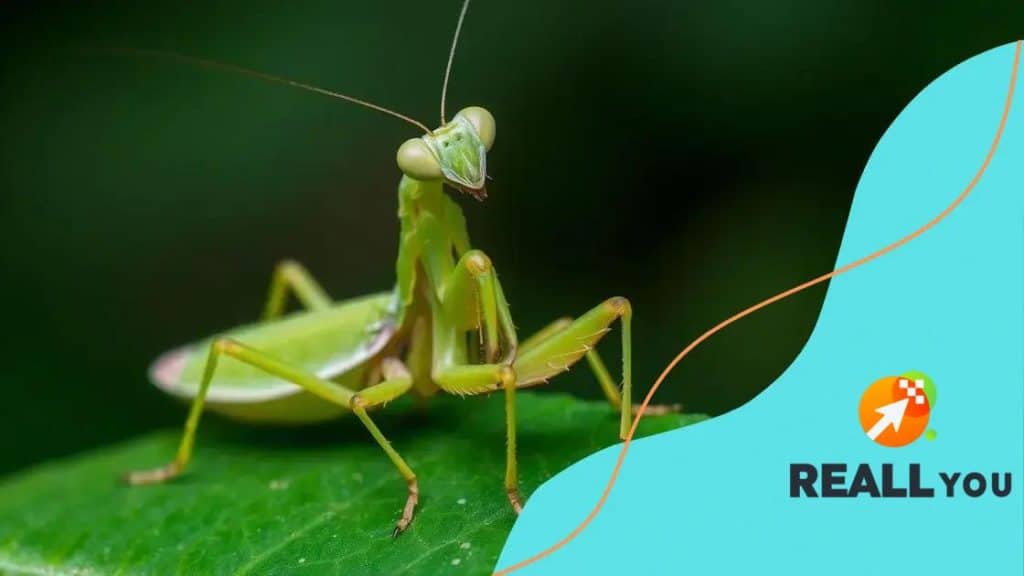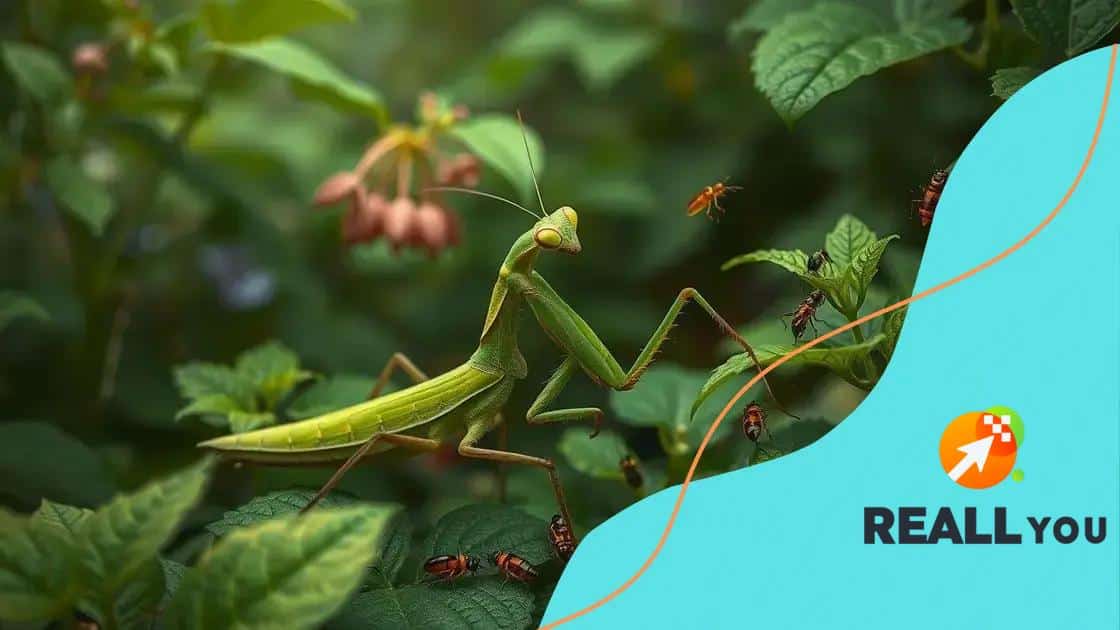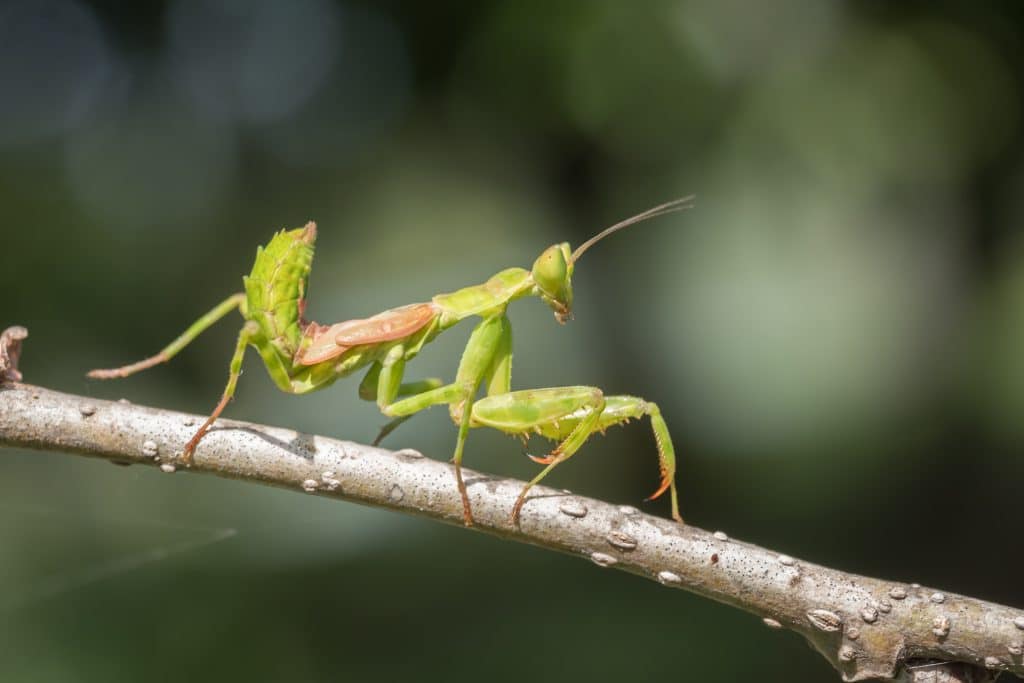Mantis: the fascinating world of these incredible creatures

Anúncios
Keeping a mantis as a pet can be a fascinating and rewarding experience. These insects require a setup that mimics their natural environment to stay healthy.
It’s important to provide proper heat, humidity, and live food. Small details make a big difference in your mantis’s lifespan and comfort.
Anúncios
With the right care, mantises reveal impressive behaviors and can thrive under your observation
Understanding the mantis species
There are more than 2,400 mantis species worldwide, each with distinct traits and behaviors. Their variety makes them a favorite among insect enthusiasts.
Anúncios
Knowing different species helps you understand their natural needs. Each type has evolved unique survival strategies.
Key characteristics of mantis species
Each mantis species possesses unique traits that contribute to its distinctive behavior and survival.
For example, the praying mantis is well known for its characteristic posture and predatory aggression.
Other species have evolved specific colors and patterns that help them blend into their environment. Camouflage allows them to hide from predators and surprise their prey.
These adaptations are vital for their survival. The mantis’s ability to stay hidden and ambush prey gives it a significant advantage in its natural habitat.
Notable mantis species
- European Mantis: This species is easily recognizable by its green body and prominent triangular head.
- Ghost Mantis: Known for its exceptional camouflage, this mantis resembles dried leaves or flowers.
- Orchid Mantis: Often seen in shades of pink and white, it mimics orchids, aiding in hunting.
- Chinese Mantis: One of the largest species, it is commonly found in gardens, known for its size and behavior.
Understanding these species is critical for those keen on nature and biodiversity. Many mantis species play vital roles in their ecosystems by controlling pest populations.
Their predation shows the balance of nature in action, where each species contributes to a functional ecosystem.
As we explore their ecological roles, it becomes clear that mantises are not just captivating insects; they are integral to healthy environments. Their hunting strategies and adaptations illuminate the astounding ways in which life evolves to survive.
Unique behaviors of mantises
What truly sets mantises apart are their striking behaviors. Their actions are calculated and often surprisingly complex.
From the way they stalk prey to their mating rituals, everything is intentional. These insects are far from ordinary.
Their behaviors help them adapt, survive, and interact with their environment in unique ways.
Hunting techniques
Mantises are exceptional predators. They are known for their ambush tactics, where they wait patiently for unsuspecting prey.
Their triangle-shaped heads allow for excellent binocular vision, helping them to judge distances.
With their long forelegs, mantises quickly snatch their prey, which often includes insects like flies and moths.
Mating rituals
Mantis mating is both fascinating and brutal. Some females may eat the male during or after mating.
Though shocking, this behavior boosts her nutrition and egg production. It’s part of a natural reproductive cycle.
Males often approach slowly, displaying gestures to avoid becoming food. Survival depends on careful courtship and timing.
Communication
Mantises don’t rely on sounds to communicate. Instead, they use posture, color shifts, and motion.
-
Visual signals: Used to attract mates or show dominance.
-
Color changes: Helpful in camouflage and subtle messaging.
-
Sound: Rare, but some produce warning noises if threatened.
These subtle cues allow mantises to navigate social and survival challenges. Their nonverbal communication is key in many scenarios.
The role of mantis in the ecosystem

Mantises are essential players in ecosystems. Their presence indicates healthy biodiversity and a functional natural balance.
They control pest populations by feeding on insects. At the same time, they serve as prey for birds and frogs.
This dual role keeps the food chain balanced and stable. Their impact is small in size but large in ecological value.
Predatory nature
Mantises feed on a wide variety of insects, including common garden pests. This makes them valuable for natural pest control.
Their sharp reflexes and hunting instincts keep insect populations in check. Farmers often see them as allies.
By reducing harmful bugs, they indirectly support healthy plant growth. This natural balance benefits both nature and humans.
Food web dynamics
While mantises are top-tier hunters among insects, they’re also food for others. Many animals rely on them as a food source.
This connection adds depth to food web stability. Each predator and prey relationship strengthens the ecosystem.
Without mantises, other species could become overabundant and disruptive. Their presence helps keep everything in balance.
Significance in biodiversity
Mantises help indicate a thriving and diverse ecosystem. Their survival depends on rich, balanced environments.
-
Indicator species: Show ecosystem health and balance.
-
Habitat diversity: Found in gardens, forests, and fields.
-
Pollination support: May aid in pollination while hunting.
Protecting them means protecting the intricate systems they support. Biodiversity thrives when even the smallest players are valued.
How mantises adapt to their environment
Adaptation is one of the mantis’s greatest strengths. Their ability to change behavior and appearance is key to survival.
In both wild and urban environments, mantises remain hidden and effective. They match surroundings with surprising accuracy.
Their success lies in their evolutionary ability to adjust quickly and quietly. Their instincts help them survive changing conditions.
Camouflage and mimicry
Many mantis species resemble leaves, flowers, or twigs. These disguises help them ambush prey and avoid predators.
Some species sway gently with the breeze, enhancing the illusion. This natural mimicry is an evolutionary masterpiece.
Their camouflage keeps them safe and successful in any terrain. It gives them the upper hand in both hunting and hiding.
Behavioral adaptations
Mantises don’t just look like their surroundings, they act like them too. Their movements are subtle, often blending with plants.
They can stay motionless for hours, waiting for the perfect moment. It’s a game of patience and instinct.
These behaviors are key to their survival across habitats. Even in unfamiliar areas, they quickly adjust their tactics.
Dietary flexibility
Mantises are opportunistic feeders. They eat what’s available and adjust to seasonal food changes.
-
Generalist feeders: Can eat many insect types.
-
Opportunistic hunters: Adapt hunting based on what’s nearby.
-
Mating strategies: Vary by species and help ensure reproduction.
This flexibility allows them to thrive even in unpredictable environments. Their adaptability helps sustain them year-round.
Caring for mantises as pets

Mantises make great pets for those interested in observing nature up close. They don’t require much space but do need attention.
A proper setup includes space to move, climb, and molt safely. They also need the right levels of heat and moisture.
Consistency and observation are the keys to keeping your mantis healthy. A well-maintained habitat leads to an active and happy pet.
Setting up the habitat
Choose a terrarium or container with proper ventilation and moisture. It should be tall enough for the mantis to molt easily.
Add plants and small branches to mimic their natural environment. This gives them space to hide, climb, and rest.
A safe, comfortable habitat reduces stress and supports growth. A realistic environment helps encourage natural behaviors.
Temperature and humidity
Most mantises prefer temperatures between 70°F and 80°F. Humidity levels should be tailored to the specific species.
Regular misting helps maintain proper moisture. Always monitor for mold or excessive dryness.
Maintaining these levels supports molting, feeding, and overall health. Stable conditions help prevent illness and stress.
Feeding your mantis
Mantises feed exclusively on live insects. Offering the right prey size is essential to avoid injury or stress.
-
Live insects: Crickets, roaches, and fruit flies are ideal.
-
Size-appropriate prey: Avoid insects larger than the mantis.
-
Frequency: Feed every 2–3 days, depending on age and species.
Remove uneaten food to keep the enclosure clean and healthy. A tidy habitat encourages activity and reduces risk of infection.
FAQ – Questions about caring for mantises as pets
What do I need to set up a habitat for my mantis?
You will need a well-ventilated enclosure, suitable substrate, and hiding spots like plants or branches.
How often should I feed my mantis?
Feed your mantis every few days with live insects, adjusting the amount based on its size and age.
What temperature and humidity are best for mantises?
Mantises prefer temperatures between 70°F and 80°F with humidity levels around 40% to 60%.
Is it safe for mantises to be handled?
While mantises can be handled gently, it’s best to observe them and minimize handling to reduce stress.






